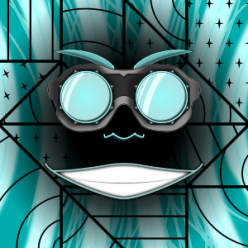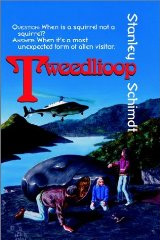 Nancy Fulda is a mom, writer, assistant editor of Jim Baen’s Universe, and the creator of Anthology Builder. Anthology Builder is an innovative website that allows customers to choose a set of short stories that are then printed and bound into a printed anthology just for them.
Nancy Fulda is a mom, writer, assistant editor of Jim Baen’s Universe, and the creator of Anthology Builder. Anthology Builder is an innovative website that allows customers to choose a set of short stories that are then printed and bound into a printed anthology just for them.
Nancy, thanks for joining us!
David Steffen: You’ve got a lot on your plate with parenting, writing, and editing. How do you budget your time? Do you have to set aside a part of the day for writing time?
Nancy Fulda: Scheduling is probably the hardest thing about working with small children at home. The needs of the children change as they grow, so I’m constantly shifting the schedule to accomodate them.
For about two years I worked every morning from 10:00-12:00, like clockwork, while the older children were in kindergarten. Now that my youngest has started crawling (not to mention climbing the stairs and pulling things off of shelves) I’ve shifted to a “work while the baby naps” approach. It’s a bit helter-skelter, but after a while you learn to maintain your concentration despite frequent interruptions.
David: What’s the most surprising thing you’ve learned working on the editorial staff of Jim Baen’s Universe?
Nancy: That there’s no such thing as a one-size-fits-all story. Before I started working for Baen’s, I had this vision in my head of the perfect story, the one that all readers would adore without reservation. I thought if I just learned the right techniques, I could write a story that would sell anywhere, to anyone.
After working with the reading team at Baen’s, it became clear that there is no such thing. Even in a group as carefully selective as ours — we were all looking for upbeat adventure stories– we still disagreed wildly on which story out of a given set was the best. My top pick was often someone else’s least favorite, and vice versa. We did occasionally find a story we all loved, but that tended to be the exception rather than the rule, and even those stories would probaby have been instantly rejected at publications with a different editorial vision than ours.
David: With Jim Baen’s Universe closing, do you have plans to join the staff of any other publications?
Nancy: No. Getting into editing was probably the best thing I’ve ever done for my writing, but if you’re not careful, editing will eat up your whole life. It’s time for me to narrow my focus and concentrate on my own writing again.
David: Where did you come up with the idea for Anthology Builder?
Nancy: It was kind of an accident. I’d just made my first few pro sales and was hanging out with a lot of other writers in the same boat. I wanted to keep up with what my friends were publishing, but they were selling to such a wide variety of magazines that I would have gone bankrupt if I’d tried to subscribe to them all.
“What I want,” I told them, “Is a do-it-yourself anthology web site where you can pick whatever stories you want and have them delivered as a bound book.”
The response to that quip was overwhelmingly positive and the rest, as they say, is history.
David: How has your experience with Anthology Builder compared with your expectations in terms of difficulty, popularity, and financial?
Nancy: It’s exceeded them on all three levels.
If I had known how much work AnthologyBuilder was going to be, I probably would never have done it. It’s a bit like childbirth, I guess. Starting the ball rolling is easy. By the time you realize what you’ve gotten yourself into, it’s too late to back out. *laughs*
I’m having fun, though, and we’ve seen far more sales in the first few years than I’d expected. Last year AnthologyBuilder paid all its own bills and generated enough excess for two large promotional campaigns. There wasn’t much left after that, of course, but I have high hopes for the future.
David: If you could go back in time and do the startup of Anthology Builder again, what would you do differently?
Nancy: The software. I’m very pleased with the way the system runs, but if I had it to do over again, I’d make some changes in the implementation, particularly the administration tools.
David: What has been the single most memorable moment in your writing career to date?
Nancy: I think it was reading the biographies of the other authors in the back of the first professional anthology I sold to. I remember reading those bios and thinking: “If I can make it into a Table of Contents with these folks, then maybe I have a shot at becoming a real writer after all.”
David: If you could give only one piece of advice to aspiring writers, what would it be?
Nancy: Write what you love. Learn writing technique first, of course: Join an online writers’ group, give and receive critiques, hone your skills. But once you’ve done all that, clear your mind of the ‘Thou Shalt Not’s and just write a story you enjoy. If you love your story, chances are the audience will, too.
David: What’s your favorite thing to do when you’re not reading or writing?
Nancy: That depends on the day and, occasionally, the time of the day. Among the things I enjoy are ballroom dance, chess, painting, software development, and singing.
David: What was the last book you read?
Nancy: Tintenherz by Cornelia Caroline Funke.
David: Your favorite book?
Nancy: Isn’t that a bit like asking someone to pick a favorite child?
Some of the books I’ve enjoyed most through the years are Heir to the Empire by Timothy Zahn, The Blue Sword by Robin McKinley, Mere Christianity by C. S. Lewis, and Paladin of Souls by Lois McMaster Bujold.
David: Who is your favorite author?
Nancy: Lois McMaster Bujold. Not only because I love her books, but because when I read her keynote addresses she seems like a supremely sensible human being.
David: What was the last movie you saw?
Nancy: Star Wars Episode IV. Amazing movie, that. 30 years since its original release, and it was still able to captivate the attention of my six-year-old.
David: What is your favorite movie?
Nancy: Today, right now? Evita.
David: Do you have any upcoming publications we should watch out for?
Nancy: “Knowing Neither Friend Nor Foe” is coming up in Beneath Ceaseless Skies and “A Song of Blackness” is scheduled for the Fantastical Visions V anthology.
As it happens, both of these are stories with a history. “Knowing Neither Friend Nor Foe” (originally titled “Kitjaya”, but as Scott pointed out, that title does little to hilight the primary conflict) is my first story from a completely alien viewpoint. ÂI never realized before how challenging such a story is, particularly because the reader keeps looking for humans to pop up. ÂDuring the critique process I had to rework several scenes in order to clearly convey that, no, there were no homo sapiens hiding behind the little green curtain. ÂI’m pleased that the effort paid off.
I wrote “A Song of Blackness” right after reading “Bethan’s Garden” by Sandra Tayler. ÂSandra’s story held so much warmth and human connection that it made everything I’d ever written feel like insignificant drivel. ”A Song of Blackness” was my conscious effort to write a story that *meant* something.
David: Can you tell us about your works in progress?
Nancy: I’m finishing rewrites on “Backlash”, which is a novelette about a man who discovers that his daughter is part of a terrorist movement. ÂLots of Bondian action, time travel, and a little family drama all get rolled into the mix.
I’m also working on a novel set on a planet with an extremely slow rotational period. ÂNomadic tribes circle the equator to stay in the habitable bands between Day and Night. ÂIt’s a very fun milieu to work in, and involves riding lizards, space ships, an evil technocratic society, and a plot to preserve all life on the planet.
David: Thanks a lot for taking the time for the interview, Nancy. For all of you out there, I encourage you to check out her writing, and to look into the service she provides at Anthology Builder.
Nancy: Thank you, David. ÂIt’s been a fun interview.

 ,Review written by Frank Dutkiewicz,
,Review written by Frank Dutkiewicz, Nancy Fulda is a mom, writer, assistant editor of Jim Baen’s Universe, and the creator of Anthology Builder. Anthology Builder is an innovative website that allows customers to choose a set of short stories that are then printed and bound into a printed anthology just for them.
Nancy Fulda is a mom, writer, assistant editor of Jim Baen’s Universe, and the creator of Anthology Builder. Anthology Builder is an innovative website that allows customers to choose a set of short stories that are then printed and bound into a printed anthology just for them. Written by Melissa Shaw
Written by Melissa Shaw Melissa Shaw’s short fiction has appeared in
Melissa Shaw’s short fiction has appeared in